A complete guide to Two-way Radios
Used worldwide, the two-way radio is one of the most commonly used pieces of communication equipment. Despite the digital revolution replacing many older styles of technology, the two-way radio has remained extremely popular due to its functionality, versatility and reliability.
Termed ‘two-way’ because of its ability to both send and receive signals, these types of radios are designed for person-to-person, bidirectional voice communications. Often constructed in a stationary or mobile base, the most well-known example of a two-way radio is the walkie-talkie.

When was the two-way radio invented?
The use of transmitters and receivers for two-way communication was employed as early as the 1900s, but it was in 1923 that the first true two-way radio was used commercially. Whilst ships and boats had relied on separate transmitters and receivers to facilitate two-way communication, early versions of the technology did not allow for the use of voice communication. Instead, messages were sent and received via codes, such as Morse Code.
However, by the early 1900s, two-way radios had advanced to enable voice communication to be transmitted and received. Unlike the modern two-way radios we use today, these early models didn’t completely meet the definition of ‘two-way’. Instead, a separate transmitter and receiver were used to ensure two-way communication could be achieved.
Canadian inventor Don Hings is a key figure in the development of walkie talkies. Hings created his portable radio signalling system when working for CM&S. The devices weren’t initially known as ‘walkie-talkies’ and they were created to help pilots communicate effectively. When the Second World War broke out in 1939, their benefits for soldiers immersed in the throes of battle became abundantly clear as a way of communicating with each other on the battlefield.
Following a period of extensive research and development, Hings created a wide range of different models of portable radios to serve a variety of needs, with the Model C-58 Pack Set becoming particularly iconic and prestigious in its field. Tens of thousands of models were manufactured and shipped worldwide. Features of the C-58 included a range of antennas and power supplies, voice scramblers to protect privacy and enhance security and also a filter to remove the sounds of battle from communications so that messages could be received loud and clear even during significant gunfire and engine noise.
Rather than ‘walkie-talkies’, the devices were first referred to as wireless sets, pack sets and two-way field radios. The term ‘walkie-talkie’ was first coined by journalists informing the public about the new innovative technology. The radio engineer Alfred J Gross and the Motorola engineering team also had a big role to play in developing the capabilities of the device during its early years. British, German and US armed forces all used two-way radio systems during the second world war.
As time and technology progressed, it was Australian, Frederick William Downie, who developed what we recognise as the first, real, two-way radio as we know it today. As a Senior Constable, Downie was determined to find a more efficient way for the Victorian Police to communicate with one another. Previously relying on communication via public telephone boxes, Downie’s creation of the first, true, two-way radio meant that the Victorian Police Force was the first in the world to make use of wireless communication.
Though revolutionary at the time, Downie’s creation was quite far removed from what we now recognise as a two-way radio. In fact, the first models to be used by the police force took up the entire back seat of each patrol car! Within the same decade, however, radio equipment became more advanced and was significantly smaller, as well as being more powerful. This led to more widespread usage, with ships and aircrafts also using two-way communication to contact one another.
By the early 1930s, police in the United States were also using fixed, mobile two-way radios in patrol cars. Facilitating reliable communication and fast response times, the two-way radio was – and is – integral to effective policing, ambulance, fire and rescue in most parts of the world. Portable wireless communication may seem like a new invention, but it was portable two-way radios which first enabled people to communicate in this way. As early as 1940, portable two-way radios, or walkie-talkies, were being used to facilitate communication.
First developed in simplex mode, early two-way radios only allowed one station to transmit at a specific time. As all signals were transmitted on the same frequency, only one person could speak and transmit at a time, whilst others listened. Also known as half-duplex, the simplex mode needed refinement in order to enable a higher degree of communication to take place, without the need for one speaker to wait until someone else had stopped transmitting a signal.
By incorporating the use of differing frequencies, however, the full-duplex mode was established. Providing transmitters and receivers were not positioned in close proximity to one another, full-duplex mode enabled the simultaneous reception and transmission of signals. In essence, different groups used a specific frequency to ensure there was no interference from other, unrelated users and were able to send and receive signals at the same time, meaning there was no delay in communication.
With the technology in place, the scene was set for the development of the modern-day two-way radio, and its continued evolution has ensured it remains a popular and supremely functional method of communication.
CALL TWO WAY RADIO TODAY - 0800 028 6261 / 01527 872 777
What is a Two-way Radio?
In its most basic form, a 2-way radio is a radio is capable of both transmitting and receiving signals. In contrast, a broadcast radio is only capable of receiving signals. Whilst you might listen to a commercial radio station on a broadcast radio, 2-way radios enable you to talk and listen to other people using similar equipment, on the same frequency.
However, there are many different classifications of two-way radios, depending on their functionality and how they link to one another. A conventional two-way radio works on RF channels, which are fixed, and many conventional two-way radios give the user control over which channel they use. In some instances, a conventional two-way radio can scan multiple channels and search for a valid transmission. Alternatively, a trunked system ensures that channel assignments occur automatically, as the system selects the physical frequency to be used.
Similarly, simplex or full-duplex channels can be used, depending on the system installed. Many of the simplex systems still being used were originally installed prior to the 1940s, but the complexity of upgrading them means it’s more efficient to simply leave them in situ. Despite its limitations, the simplex system is the simplest, and, therefore, the most reliable form of two-way radio. Whilst both radios must be within an effective range of one another, which limits the distances it can transmit to, and from, the ease of use and open architecture ensures simplex channel systems remain popular for two-way radios and walkie-talkies.
Duplex systems use different channels, but additional equipment is typically required in order to re-transmit or ‘repeat’ the signal. Whilst this added equipment means a more advanced infrastructure is required, the power of a separate antenna can greatly increase the functionality of the two-way system and allows for effective communication across a far greater distance.
Push-to-Talk two-way radios are particularly common and require the speaker to push a button on their radio before their signal will be transmitted. These types of two-way radios or walkie talkies are commonly used by police, fire personnel and paramedics, although they’re commonly seen on recreational equipment too, such as walkie talkies for kids. However, voice-operated transmission (VOX) is replacing Push-to-Talk walkie talkies in some instances. Instead of requiring a user to physically press a button to transmit, the radio will automatically transmit when it picks up on the user’s voice. Motorola Walkie Talkies in the TALKABOUT range are examples of two-way radios with VOX capabilities, and they’re particularly useful for individuals who may struggle to physically push a button on standard walkie talkies or 2-way radios.
With so many different styles and features of two-way radios, it can take quite some time to decide what’s right for you. Well-known brands and models, such as the Binatone Latitude 100 Twin Walkie Talkie and Kenwood walkie talkies, showcase the range of different features and the vast functionality of this equipment.
How do two-way radios work?
Each battery-powered handset contains a transmitter (which doubles as a receiver), an antenna for sending and receiving radio waves, a loudspeaker that also often functions as a microphone, and a 'push-to-talk' button.
The loudspeaker/microphone works similar to an intercom system. Speakers and microphones contain what are essentially the same components – a magnet, a coil of wire, and a cone made of paper or plastic to receive or generate sound. These can be combined into a single device and the direction of the electrical current determines which function is given precedence. These features are separate in more sophisticated models of two-way radios
When you communicate by walkie talkie you need to ensure that you are sharing the same channel, or frequency band as the person you are communicating with. When no one is talking, the device will probably be broadcasting the sound of static, like a detuned radio. When you wish to talk, you simply depress the push-to-talk button, forcing the loudspeaker to switch to microphone function, eliminating the sound of static.
When you transmit or speak into a two-way radio or walkie talkie, your words are effectively converted into radio waves. These are then sent out, usually on a pre-agreed channel or frequency band and received by other units in the appropriate range, set to the relevant channel.
As radio waves can be transmitted at the same speed as light, they allow for near-instantaneous communication. This, in itself, is one of the reasons why walkie talkies and two-way radios have always been a popular form of communication.
Once a signal is received by the unit, it is converted into electric currents, and the speaker on each unit is able to convert these to relay the words of the speaker who is transmitting. When the speaker has finished transmitted, they often utter the universal sign off of ‘Over!’ and release their push to talk button. This indicates that they have finished speaking, their own unit will revert to listening mode, and another user is free to transmit a signal of their own.
When full-duplex mode is being used, more than two people may talk at the same time on a two-way radio or walkie talkie, similar to the way you might talk on a telephone. However, on a simplex system, only one person will be able to transmit at a time, and others must wait until they have finished before they can then transmit a signal back.
What is a radio frequency?
A radio frequency, or channel, is how two-way radios and walkie talkies communicate with one another. In most cases, two people or a group of people will set their units or handsets to a particular channel in order to communicate via that radio frequency.
VHF (very high frequency radio) and UHF frequencies are used most commonly and, because they are used so often, some spectrum management needs to be in place. UHF frequencies have shorter wavelengths than VHF, which means UHF may work better when the people trying to communicate are obstructed by buildings, but VHF will typically have a longer range and will be used for a long-range walkie talkie.
In addition to this, UHF frequencies are more likely to absorbed by other objects, which means the signal may be weakened. In contrast, UHF is generally less affected by electrical noise than VHF, so it may be beneficial in certain environments.
Typically, UHFs are used when the people using the units are within buildings, whilst VHFs are more favourably when users are outside, in the open air.
Are walkie talkies two-way radios?
The terms ‘two-way radio’ and ‘walkie talkie’ are often used interchangeably, but they’re not exactly the same thing. A two-way radio is a piece of equipment which can transmit and receive signals, but it can take various forms. For example, a two-way radio may be installed in a vehicle, in a fixed location or in a portable, handheld device. In contrast, a walkie talkie is commonly identified as a handheld device which can be used portably, hence its name.
In essence, a walkie talkie is always considered a 2-way radio, but a two-way radio may not always be a walkie talkie!
When used in full-duplex mode, walkie talkies’ long-range makes them extremely popular. With the ability to connect with another user over significant distances, they are ideal for both commercial and recreational use. Fortunately, major manufacturers have developed a wide range of styles, so you can find walkie talkies by manufactures such as Motorola which are perfect for business use and other models which make great kids walkie talkies.
Linked via a single, shared frequency, each handset features a receiver/transmitter, an antenna, a speaker and microphone. The majority of walkie talkies also feature a ‘push to talk’ button, and you can find many walkie talkie ear-piece features too. From pink walkie talkies, children’s’ walkie talkies and even Toy Story walkie talkies to tough IP walkie talkies, long-range walkie talkies and rechargeable walkie talkies, there are plenty of options to choose from.
Walkie talkies can be used by two people to communicate, but they can also be used by groups of people. In order to communicate effectively, every handset needs to be tuned into the same channel, also known as a frequency band. Typically, walkie talkies will be set to constantly receive, and users will press the button when they want to transmit. When transmitting, their speaker will be muted.
Has modern society in any way changed the impact of the two-way radio?
The digital revolution has changed the way we communicate. Email, video calls and instant messages are now used ubiquitously, so is there still a demand for two-way radios? Absolutely! Despite modern technology changing many facets of everyday life, two-way radios and walkie talkies are still used in a wide variety of situations.
Indeed, modern technology has enhanced two-way radio communication and even improved the quality of transmissions.
The introduction of digital radio, for example, has increased the efficacy of two-way communication significantly. Whilst analogue two-way radios and walkie talkies are still used in the airline industry and in many recreational outputs, such as in a walkie talkie for children, digital radios are generally considered to be of higher quality.
All modern mobile phones rely on digital communication, and digital radio is now becoming the baseline for infrastructure in most countries around the world. Whilst technology has improved the two-way radio system, it certainly hasn’t been its death knell. In fact, walkie talkies and 2-way radios are used in practically all industries and remain one of the most common forms of communication.
What are two-way radios used for?
Walkie talkies and two-way radios have endless uses and can be used for both business purposes and recreationally, as well as for managing public and individual safety. Any industry or sector which requires personnel to stay in touch with one another when they’re not face to face can utilise two-way radios.
Emergency Services
As highlighted above, the first incarnation of the modern two-way radio was developed by a Senior Constable in Australia. Two-way radios are practically synonymous with the emergency services and are used to ensure personnel can communicate with one another instantly. When urgent instructions or information needs to be disseminated between staff members or from a central dispatcher to personnel in the field, two-way radios are the gold standard.
However, it isn’t just the emergency services who rely on walkie talkies and two-way radios. In the construction industry, for example, contractors and builders routinely use two-way radios to communicate with each other. Due to the vast size and loud noise on construction sites, speaking to each other isn’t always viable, even if you’re in a relatively close proximity to the person you’re communicating with. Two-way radios overcome these obstacles, particularly when used with an earpiece to ensure increased volume and clarity.
Construction Sector
Anyone who operates in the construction sector is going to be on the move all of the time. Between operating dangerous machinery and transporting heavy materials, there is going to be little room for error or for hassle. This means that professional communication is needed and it must be able to withstand extreme weather, hazardous conditions, and heavy usage too. This means that these sorts of two-way radios must be easy to use, affordable, inherently safe, lightweight, and durable. In terms of technical requirements, two-watt radios tend to cover more than enough territory. However, for large scale projects, four watts may be preferred. Moreover, because supervisors tend to split workers into different teams, it is imperative to ensure there are going to be enough channels for each group to be supported. In most operations, four will be enough.
Furthermore, the robust structure of walkie talkies and radios makes them perfect for use in these environments. With IP ratings indicating how strong and robust each model is, manufacturers have designed two-way radios specifically with this type of usage in mind.
Factory & Warehouse
Similarly, the manufacturing industry routinely uses two-way radios to combat communication problems. Due to the loud noise produced by machinery and equipment, communicating can be difficult in a factory or warehouse environment. A two-way radio ensures there is no delay or difficulty in communicating with a colleague and ensures that miscommunication does not have a negative impact on business processes.
In addition to this, two-way radios and walkie talkies can be programmed to alert staff immediately if there is a delay or problem with the production line. At times when manufacturing companies are highly focused on maximising productivity and producing lean models, these alerts can be a valuable way of reducing costs and increasing business efficiency.
Transport
Of course, two-way radios have always been used in the transport industry, with most taxi drivers and cab drivers having fixed units installed in their vehicles. Whilst the digital revolution has changed the transport industry and given rise to companies, such as Uber and Lyft, it’s actually increased the usage of walkie talkies too. With more drivers on the ground, two-way radios are the perfect way for them to communicate with one another, as well as with a central dispatcher if one is used.
Schools, Colleges and Universities
When you think of two-way radios for schools, you may not automatically associate them with the education sector, but they’re commonly used in schools and universities. These facilities often stretch over a considerable geographical area and may be comprised of a number of buildings. With hundreds of staff on-site, two-way radios and walkie talkies are the most efficient way to communicate, particularly when they are in charge of the health and welfare of students. If there was a medical emergency, for example, a walkie talkie or two-way radio is likely to be the quickest way to summon help and alert others of the situation.
Many schools, colleges and universities across the world have turned into mini villages rather than a collection of smaller buildings. There are students, maintenance staff, administrators, and teachers scattered throughout different buildings. Because of this, safety, efficiency, and coordination can suffer. This is where two-way radios come in; helping everything to run smoothly. This means that all members of staff can be in touch with one and other. Moreover, these devices are beneficial during certain events and areas. This includes assemblies, sporting events, music events, field trips, fields, playgrounds, bus loading zones, and school crossings. There is certainly no one-size-fits-all when it comes to choosing two-way radios for a school environment. This is because of the variety of tasks that this sort of equipment is expected to handle. At the very least, therefore, this equipment must be designed for multi-use purposes, be easy to use, and cost-efficient too.
Hospitality
Walkie talkies and two-way radios are also commonly used in the retail and hospitality industries. With many retailers now occupying large units, staff need an effective, low-cost way to communicate with each other quickly, and two-way radios provide just that. Similarly, businesses operating within the hospitality industry need to ensure their employees can communicate in real-time, and a walkie talkie allows them to do this with ease.
For security personnel, in particular, walkie talkies are an extremely valuable tool. In event management, for example, hundreds of security personnel may be safeguarding a concert or festival and need to be in constant contact with one another. As well as planning their security strategy and organising staff, a two-way radio or walkie talkie ensures security personnel can communicate with each other easily in the event of a security breach or an emergency.
Security
Security professionals have relied on walkie talkies for a long time in order to be able to carry out their duties effectively. This can involve anything from apprehending suspects to routine monitoring. Not only do two-way radios give these professionals the ability to ensure there is a constant information flow, but they also ensure that resources are mobilised quickly should an emergency situation arise. In terms of technical requirements for these types of two-way radios, it is important that they have a high wattage and that they are durable. They also need to be able to transmit over a large territory while withstanding daily wear and tear. In most cases, four or two watt models will be enough. However, there are sometimes circumstances where repeater-capable units are needed because the security team in question operates over a more geographically dispersed area.
Oil and Mining
Industries which operate outside of usual areas can also utilise two-way radios and do so on a regular basis. Whilst two-way radios have been used in shipping since the beginning of the 20th century; they’re also used in the airline industry and in the oil and mining sectors. Many oil workers work offshore, well outside the remit of mobile phone signals and internet connectivity. Whilst more modern forms of technology have not yet found a way to facilitate effective communication in such instances, the two-way radio provides an excellent method of communication. In high risk environments, such as on oil rigs, it’s vital that workers can be in constant contact with each other and a walkie talkie is an easy and efficient way to ensure they can be.
With so many benefits of using walkie talkies and two-way radios, it’s not surprising they’re used in so many different environments. Indeed, the reliability and functionality of walkie talkies is hard to beat, which may be why they still reign supreme despite an influx of new technology being produced.
Is a two-way radio just for business?
Not at all! Although two-way radios and walkie talkies do have many business uses, they are used in a variety of other situations too. First and foremost, two-way radios are fun to use. Young people love communicating using this type of equipment, and there are plenty of cheap walkie talkies and girls and boys walkie talkies designed for young people.
Whilst two-way radios are fun to use; they also provide an important safety net for families as well. By giving people an easy way to communicate with one another, they provide peace of mind and reassurance when you’re unable to actually see the individual you’re communicating with.
A parent may feel anxious about letting a child play outside without adult supervision, for example. With a two-way radio, parents can ensure that they can communicate with their child and vice versa, which gives everyone extra peace of mind.
Furthermore, a two-way radio or walkie talkie is an excellent way to communicate with older members of the family. Due to their simple design, walkie talkies are extremely easy to use, and older people, who may not have an interest in newer forms of technology, will find them very user-friendly. Once their unit has been programmed to the right channel, they can communicate directly with others on the same channel, such as family members, so won’t have trouble trying to scroll through a virtual phonebook or memorising lots of phone numbers. In addition to this, a walkie talkie can be carried around, affixed to a belt loop or even worn on a lanyard around the neck or wrist, so older people can ensure they have a way to communicate with family members or friends, no matter where they are.
Why are two-way radios beneficial for users?
With so many features, two-way radios and walkie talkies offer a wide range of benefits. Firstly, they’re extremely reliable and easy to work. Whether you opt for a simple or full-duplex system, you won’t find a method of two communication that’s easier to get to grips with. In addition to this, two-way radios offer a low-cost method of communication. With cheap walkie talkies and two-way radios available, there are options to suit all budgets, and you won’t need to pay for transmitting or receiving signals either. They can also be used indoors and outdoors.
Designed to offer long-lasting functionality, two-way radios don’t usually run out of charge quickly. In fact, many models can be used for over 24 hours without a replacement battery or extra charging being needed. As many walkie talkies are manufactured to a military-grade standard, you can also rely on them to be hardwearing and robust. Depending on the model you purchase, you can opt for reinforced casing which is highly unlikely to chip, crack or break, no matter the environment they’re used in.
As well as being budget-friendly, highly functional and extremely long-lasting, two-way radios also provide a clear line of communication. Specialist features can be incorporated to ensure exceptional clarity in particular conditions, such as high winds or extreme temperatures, but, even without these added features, two-way radios often offer better clarity than newer smartphones and similar types of equipment.
A particular benefit of the two-way radio system is its ability to keep working in almost any environment. Whilst a natural disaster or manmade emergency could knock out mobile phone networks and landlines, the two-way radio system is far more likely to keep working. This means that communication can be maintained in any situation, which is obviously beneficial if a disaster were to strike. As the majority of emergency services personnel already use two-way radios, their ability to continue operating in the event of a disaster is particularly advantageous.
What’s a typical lifespan of a two-way radio?
The lifespan of a two-way radio or walkie talkie will vary, depending on the type of model you choose and the usage it gets. In general, you can expect a mid-range or average unit to last for around 5-7 years, although many models do continue to work for a long period of time after this. Cheaper models may have a lifespan of around 3-4 years, although many of the more budget-friendly units are surprisingly hardwearing and long-lasting. High end systems often last far longer than 7 years, although extensive use in difficult environments could limit their lifespan.
In order to get the most out of your walkie talkies or two-way radios, you’ll want to ensure you increase their lifespan wherever possible. Generally, this means taking good care of them and not placing them in potentially damaging environments. Submerging a walkie talkie in a bucket of water, for example, is not going to have a positive impact on its lifespan!
However, keeping your walkie talkie free from dust, using it regularly and having it serviced on a routine basis will help to ensure it keeps operating for as long as possible. Similarly, using audio accessories, such as a walkie talkie headset or a walkie talkie watch can help to improve the quality of your communications and will help to increase the lifespan of your units. In addition to this, using appropriate cases to protect each unit can help to limit the damage and wear and tear they may experience, which will help to keep them in good working order.
Of course, buying the right two-way radios or walkie talkies is one of the best ways to ensure you maximise its lifespan. If you’re purchasing walkie talkies for use on a building site, for example, you’ll want to opt for a model which has a high IP rating and is built for use in noisy and dusty environments.
By assessing your needs before you make a purchase, you can determine exactly which type of two-way radio or walkie talkie is right for you. Whether you’ve got your heart set on Motorola walkie talkies, Binatone walkie talkie or you’re eagerly awaiting the arrival of Cobra 2-way radios, choosing the right model for your usage patterns will ensure you get the best walkie talkie for you.
Popular Two-way radio brands
There are a lot of different walkie talkie brands to choose from today. If you are looking for a two-way radio, you will, of course, have many different factors to consider. However, one of the most important things to look at is the brand that develops the 2-way radio. After all, you want to make sure that they have a good reputation and provide the range of products and accessories that you might need. Here are some of the most popular brands on the market currently:
Motorola
This is a brand that has an outstanding reputation in general. The company is known as a leading telecommunication company. They are responsible for releasing the first handheld phones. They are also noted for developing the first walkie talkie too. The first Motorola two-way radio was a military product. However, since then, the company has developed a range of walkie talkies. They have been developing this product for many years now, and the Motorola 2-way radios have a frequency between 10 and 35 miles. Some of the best Motorola walkie talkies include the T50, T41, T40, and TLKR. Motorola walkie talkies have features such as 8 channels, LCD displays, and no call charges.
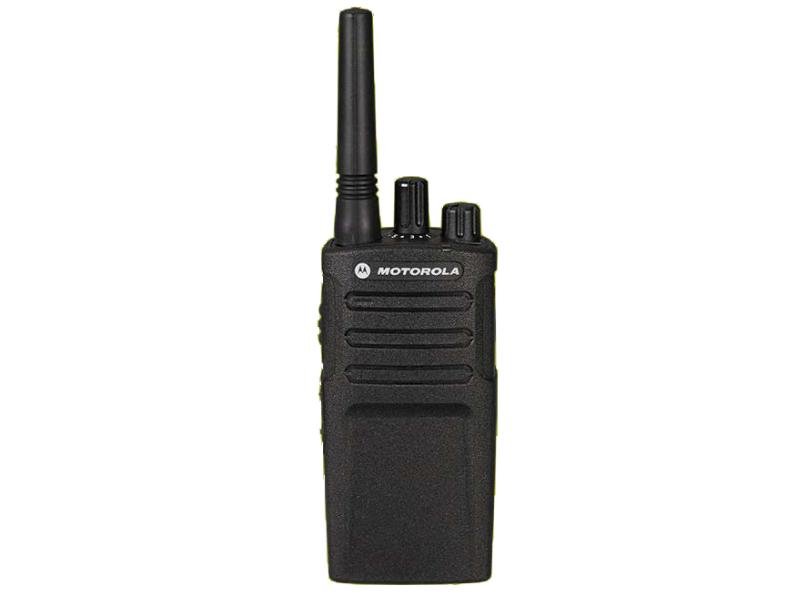
Hytera
Hytera Radios is a manufacturer of radio systems and transceivers. Hytera was founded in 1993 and they sell their products all over the world. They have an exceptional collection of two-way radio communications products.
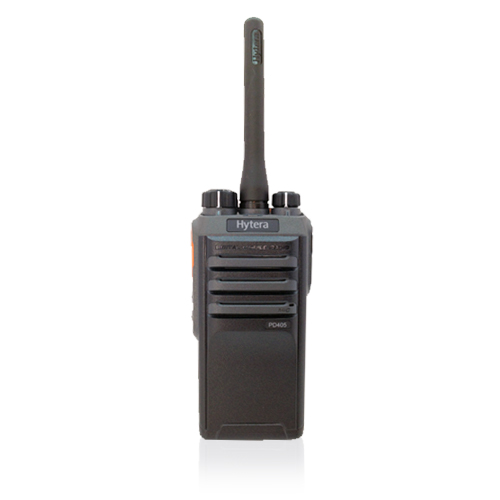
Cobra
Cobra two-way radios are also worth considering when you are looking for the best walkie talkie. This is another brand that has a long-standing reputation when it comes to the world of walkie talkies and so you can be sure that this is a brand you are going to be able to trust. They have been producing walkie talkies since 1948. Therefore, they have certainly managed to establish themselves in the industry. One of the great things about Cobra is the fact that they have catered their range to suit everyone, and so there is something for all budgets. The CXT 1000 series is one of the best when you are looking for a radio offering long-range coverage. It offers 35 miles and there are a number of different features as well. This includes LED lights that can be launched on an SOS call, as well as power-save mode, silent alert vibration, and voice activation. Of course, this is just one of many models that the brand has available, and so it is worth delving deeper into the product range they have available.
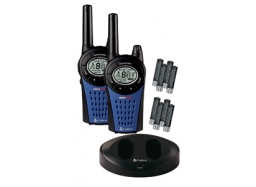
Doro
Another brand that has a good reputation for its development of a walkie talkie earpiece is Doro. Doro walkie talkies have been especially praised for their coverage up to 10km, offering exceptional long-distance coverage. They provide sound quality that is unrivalled in low network zones, coming with more than 300 channels and different sub-channels. They also fit into the hand with perfection. The WT87 series is one of the latest models. It comes with many different features that facilitate hassle-free communication.
Icom
Icom is also a reputable brand when it comes to the world of two-way radios. They are easy to access and affordable too. They can cover up to 10km in terms of talk range. They are also very compact and so they can fit into the hand with ease. They have multi-channels to subscribe to, as well as a reminder switch, a large LCD display, and a reasonable battery life.
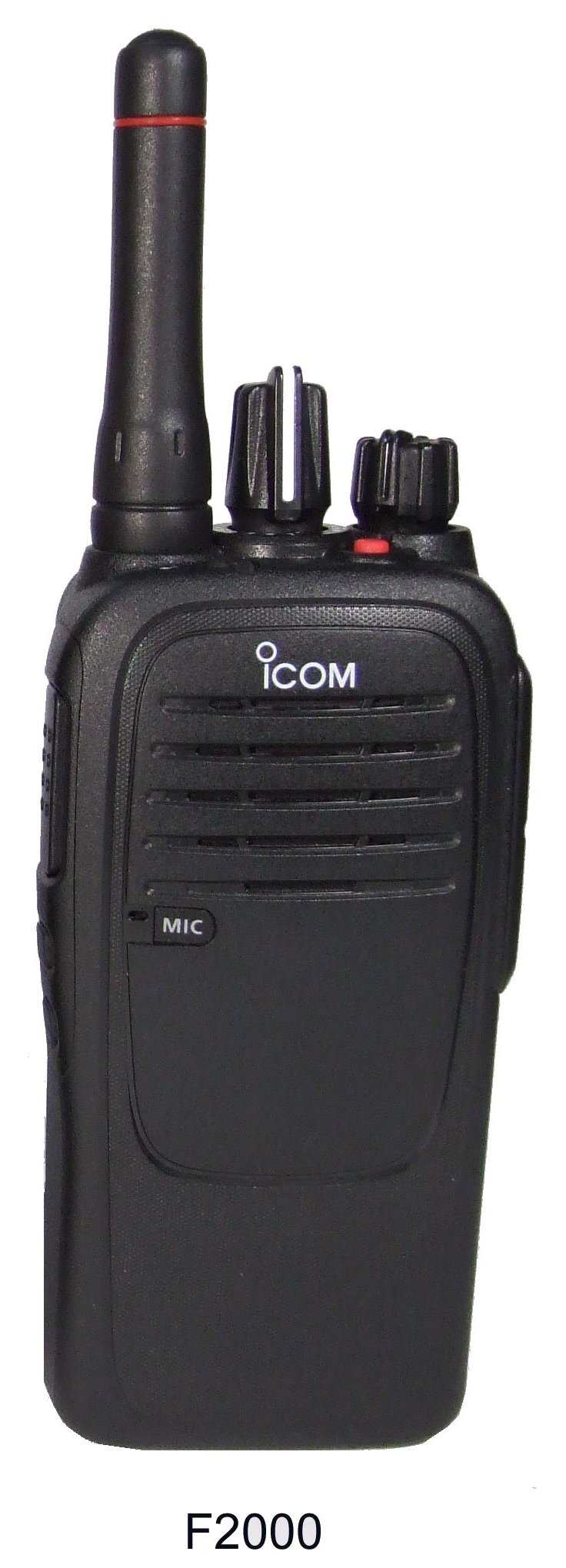
Binatone
This is another brand that offers affordably priced walkie talkies. They are also known for their seamless communication. They come with many different features including a scan feature that gives you the ability to scan for other available frequencies. These long-range walkie talkies also have talk confirmation tones that will alert the other person to talk. Binatone latitude 100 twin walkie talkie is one of the most popular ones on the market.
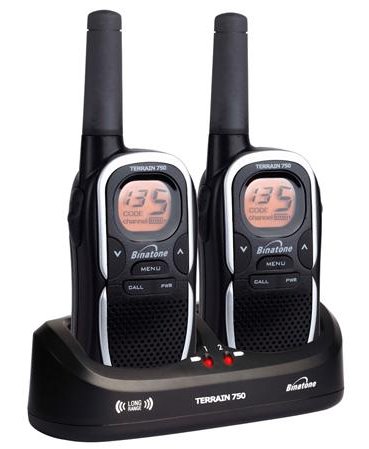
Midland
Midland has been producing quality walkie talkies for the past half-century. They produce products for individuals and corporates alike. Their GMRS line is their specialty. This is used predominately by the likes of hikers, mariners, and hunters. Their latest range of their two-way radios is known as the X-Talker collection. This range comes with a number of different features, for example, advanced weather technology, hands-free communication, 26-mile range, clear transmission, and 10-hour battery life.
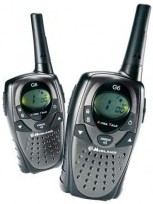
Uniden
Another brand that has a great reputation for their walkie talkies is Uniden. They have produced their GMR6000 series, which has enabled them to remain very competitive in the industry. Their walkie talkies can cover up to 50 miles in terms of talk range. They also have the benefit of being able to float on water, as well as being submersible and weatherproof. You can get a number of different accessories to go with these two-way radios, for example, gear clips, which makes it very easy for you to access your two-way radio when you ar hunting, hiking, or doing any other similar activity.Kenwood
Kenwood has a long history for the production of audio devices that fall into the high-end category. Their two-way radios definitely live up to this, offering exceptional clarity even in environments that are very harsh. These two-way radios feel very comfortable when they are in your hand and they boast exceptional ease of use too. Plus, they come with advanced voice and data abilities. In the field, they perform efficiently despite weather conditions, operate over 16 different channels, and they can cover long ranges as well.
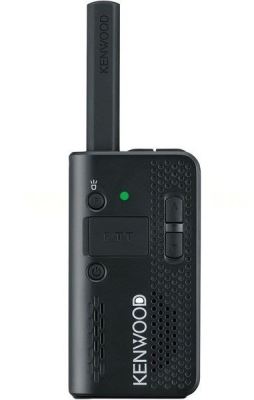
Intek
Intek Radios is a world renowned manufacturer of CB radios, amateur radios, commercial transceivers, scanners, walkie-talkies and radio accessories. It produces solutions for radio enthusiasts, drivers, boaters and more. The company was founded over 40 years ago and offers RDF communication devices and two-way radios for professionals and consumers. Popular products include UHF amateur radio transceivers, VHF marine transceivers, antennas and accessories.
Peltor
Peltor is a 3M-owned brand that specialises in the design and manufacture of two-way headsets for use in noisy and hazardous environments. Its products include built-in two-way radio headsets, FM radio headsets, in-ear solutions, push-to-talk adapters and many more. Read more information on Peltor here.
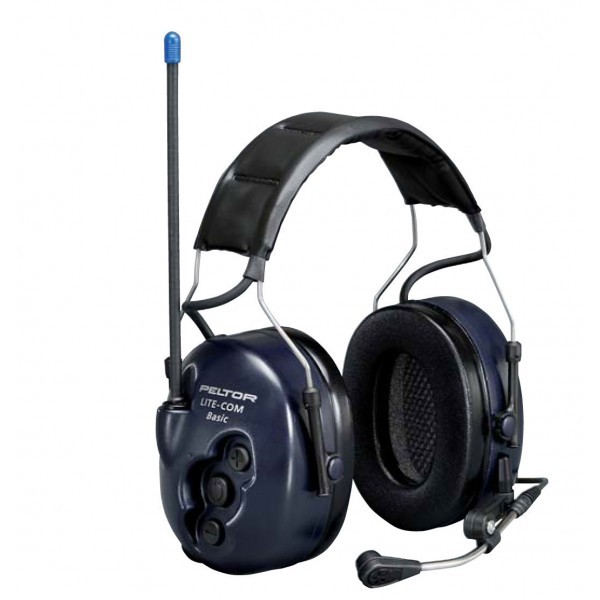
Sordin
MSA Sordin offer an extensive range of communication solutions including two-way radio headsets, ear defenders and many more. The company is a leading player in the fields of hearing protection and communication and is known as ‘the safety company’. MSA was first formed in 1914 and supplies a huge range of products for those working in hazardous conditions.
Vertex
Vertex specialises in the provision of affordable two-way radios that are built to last. The company’s radios are built to stringent requirements and undergo extensive testing. Vertex radios are as small as they are lightweight. The company was acquired by Motorola Solutions some time ago, with Vertex Standard radios now forming part of their entry-level range.
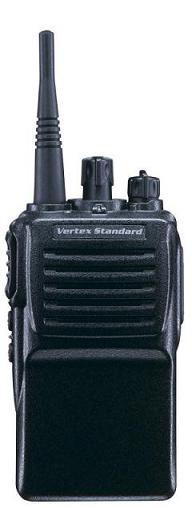
Vitai
Vitai Electronics was founded back in 2001 and is based in China. The company specialises in two-way radios, vehicle-mounted radios and more. Leading systems from the company include the VDG-360 and VDG-385. Its products are distributed across the world, with Vitai launching its foreign trade business back in 2008. It specialises in DMR digital radios, analogue two-way radios, mobile radios and more.
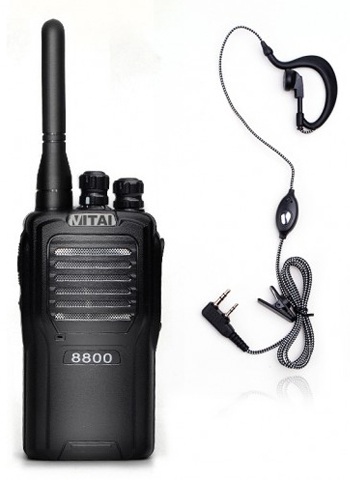
What types of two-way radio exist?
There are four different types of two-way radios for you to choose from. This includes repeater base station, desk top base station, vehicle-mounted mobile, and handheld two-way radios.
Let’s take a quick look at these four options to give you a better understanding…
Two-way radio repeaters
These are utilised to increase your PMR radio system’s operational range. Repeaters can be utilised to cover areas in your business location where a two-way radio will not receive or transmit. A repeater will get the transmission of a walkie talkie and then this equipment will broadcast it further.
Desktop base station radios
This relates to radios that are connected to a cable and will use mains power. They will typically have a lead that is to an externally mounted antenna. You will achieve a better range the higher that the antenna is. These radios tend to be utilised as a base station by adding an AC to DC power convertor.
Vehicle mounted mobile two-way radios
These radios will mount to your vehicle, be it a truck or a car, and they will utilise the power of your vehicle in order to charge them. They have a better range if you utilise an antenna mounted onto the exterior of your vehicle.
Handled radios
These are rechargeable walkie talkies that are handled and are the type of radios that you see people carrying around. This is the most common type of two-way radio you see on the market.
Licensing
You are going to need a license if you have a two-way radio system that does not operate on one of the license-free and pre-programmed frequencies that is approved by Ofcom. Ofcom regulates all business radio licenses.
What is a two-way radio license?
This will give you a unique frequency to operate on. This means that all of your radios can be operated on this frequency securely and legally. You will obtain this license in the UK from Ofcom. However, if you are based in the Republic of Ireland, you will get your license from COMREG.
What's the difference between license-free and licensed radios?
If you purchase a license-free radio, you will be ready to use it straight out of the packet. License-free radio are fine if you only need it to work over a small area and you do not require a large amount of coverage. Many people choose these when they are simply buying a walkie talkie for leisure, for example, for road trips, and for hiking. There are some disadvantages associated with going for this option, which you do need to be aware of. This includes the fact that other users will be able to transmit on the same frequency. This means that you could potentially hear other people’s conversations and you may receive some unwanted traffic. In addition, it can work vice-versa, and so you do need to be mindful that other people may end up hearing your conversations too. In light of this, two-way radios that do not have a license are not usually advised for institutions or schools where sensitive information could be released during their usage.
With regards to licensed radios, Ofcom will provide you a unique frequency on which your radios will transmit. This means that there will be no way that another party will legally be able to listen to your conversations because you have a Site-Specific Licence. This will give you peace of mind that all of the information that is going to be transmitted through these devices is going to be safe. You may have shared frequencies with a general UK license. However, the tones can be configured, meaning you can make certain that there is minimal interference. Aside from this, there are a number of other reasons why you may want to consider going down this route. This includes the fact that you can expect your radio to be as much as eight times more powerful. Moreover, coverage can be as much as 2.5 miles in open territory. If you work in difficult terrain or you demand a bigger coverage area, there are a number of options available. For example, you can use repeaters to achieve this. When compared to license-free radios, licensed radios are typically more expensive. However, this is because they will usually have many more features for you to make the most of. It is also important to point out that your licensed radio is going to need to be specially programmed. This is something the supplier of your two-way radio will be able to assist you with because they will have access to the special programming cable and software that is needed. It is actually illegal to try and programme the radio yourself so always leave it to your supplier to carry out.
What types of licenses exist for two-way radios?
The most common and basic license starts from £75, which will last for five years. However, there are other types of licenses available. Here is a quick overview:
Simple UK Light
This license authorises the use of mobile radio equipment or hand-portable equipment anywhere in the United Kingdom. You are not permitted base station use with this license. Licensees have access to 15 different frequency bands, which will be spread across four Business Radio frequency bands. The license fee is £75 for five years. You must self-coordinate with other Simple UK Light licensees.
Simple Site Light
This license costs the same as the former option over five years. It authorises the utilisation of a radio system-operating a base station and mobile stations within a small area. This will typically be one kilometre or less. The frequencies that you can attain under this type of license class tend to be utilised for radio paging systems typically. Again, you must self-coordinate with other licensees of the same nature and you will get access to a number of different frequencies.
Suppliers Light
This is a specialist type of license that has been designed for radio suppliers. It gives radio suppliers the ability to do a number of different things. This includes demonstrating business radio, trunked business radio, and radio equipment to their customers for as much as eight days. They also have the ability to allocate business radio licenses. This is known as parking and they can do this for a maximum of eight months for customers that are currently waiting for their business radio licenses. They can also hire out business radio equipment and/or radio paging equipment to customers. The limit on this is for as much as one year. This license also gives them the ability to service and repair corporate radio and marine equipment too. Again, this license lasts for five years and costs £75.
Technically Assigned
This is a license that is flexible in its nature. It gives the holder the ability the utilise a broad assortment of different business radio equipment options. You can select from a number of different frequencies across all of the Business Radio bands. There are a variety of different coverage areas too. This includes very large, for example, a county, to very small, for example, coverage within a specified building. There are various factors that are going to determine how much this sort of license is going to cost. This includes factors such as the popularity of the frequency band and the coverage area. This is why the price can range from as little as £75 to as much as £1480 for a single channel assignment, so this is important to keep in mind if you do need to apply for this type of license.
Area Defined
This gives people the exclusive use of a frequency across either the whole of the UK, a county, or a 50km squared grid square. License fees are calculated based on a combination of different factors, including, the region covered, frequency range, and frequency width.
Why might someone need a license for their two-way radio?
A lot of companies opt to have a licensed two-way radio system because there are a number of disadvantages that are associated with license-free models. This includes a shorter range, interference, and lower power. This can make them less appropriate and beneficial when compared to licensed radio systems. Moreover, a licensed radio system can be the preferred option when it comes to businesses that have more than one location, large sites, for example, factories and hospitals, as well as for taxi and other transport companies. This is because these users require radios that are more powerful than what a handheld portable ‘walkie talkie’ would offer them. If your radio system relies on vehicle-mounted radios or base station radios, then a licensed radio system is going to be a must.
What could happen if a license is not obtained for a two-way radio?
It really is not worth the risk of trying to operate your radio without a license. There are a number of different reasons why this is the case. Firstly, you could find yourself being fined. However, this is not the only way that this could hurt your business. You may also find that your radios were operating fine one day, and then the next day you cannot get through because other people are utilising the same channels. This is because they may have given the channels you need to someone else because you are not licensed, and there is nothing you are going to be able to do about this because you are operating outside of UK law.
How does someone go about applying for a two-way radio license?
It is actually really simple to apply for a two-way radio license. All you need to do is access the Online Licensing System at Ofcom whereby you will be able to apply for a license. This may be issued to you immediately. This is the case for Suppliers Light, SImple UK, and Simple Site licenses. However, if you require an Area Defined or a Technically Assigned license, you are going to need to use a different online application form, which you can find on the Ofcom website.
Two-way radio: the future
Two-way radio has been an analogue-based concept for generations, with many people continuing to use analogue systems despite the digital revolution getting underway many years ago. However, this may not be the case for much longer. Digital technology has dramatically changed the way that we use all sorts of media, and now it is starting to reshape the world of two-way radio too. There are many great reasons for embracing digital if you are a two-way radio enthusiast and as we advance towards the future we will discuss many of the advantages in this section.
Greater clarity and efficiency
Digital two-way radio offers superior spectral efficiency for higher calling capacity and provides better voice quality at the furthest margins of the RF range. It is also able to deliver more dependable coverage. This means users are finding it easier to comprehend conversations and be understood. Clear communication is on offer even in challenging environments and at long range.
A host of additional features
One of the reasons why analogue’s days would appear to be numbered is that digital offers a whole host of additional features. Digital two-way radios deliver better battery life due to the way they need less transmit power, as long as the right transmit methods are used and suitable power-management tech is available within the device. A digital system can also provide better signalling, making the user experience more efficient. When you use a digital system, you can also enjoy flexible privacy features between group and individual users. Voice quality is not degraded when private group chats are held, and there is no need to configure any add-on hardware to get the clarity you need.
Suitable for all industries
Digital systems also combine wireless data applications and voice communication in one device, allowing field workers to complete their tasks more efficiently. New digital systems are providing valuable benefits to workers in a whole host of industries, and these include construction, education, transport, security, local government, events, manufacturing, energy, hospitality and more.
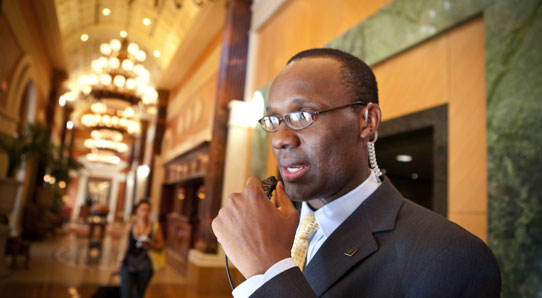
The end of the road for analogue?
Although many companies and individuals are still using analogue radios, it seems that these have evolved as much as they are ever likely to. It’s possible that many major manufacturers may stop adding new analogue radios to the market over the coming years. Innovators have struggled to make analogue systems carry out any more tasks than they are already capable of. This explains why so many companies are now gravitating towards digital, with analogue radios only able to provide some of the functions that they require.
Why move to digital?
Companies and organisations are moving to digital for various reasons. Some embrace digital because they require extra capacity and wish to blend data with voice to boost productivity. When you move to digital, you can enjoy greater efficiency, flexibility and ensure your communication needs are met by systems fit for the 21st century. Once you make the move to digital, you can continue to add new functionality as your requirements grow, change and evolve.
Exceptional power and range
Digital is the obvious choice is you wish to boost power and range whilst enjoying a dependable and cost-effective solution. Digital two-way radio offers low ownership costs. You don’t need to worry about monthly fees and only need to make a modest initial investment. Your two-way system can pay for itself within less than two years. However, when you opt for cellular solutions you will need to pay monthly or quarterly fees. With digital, you can enjoy a range of customisable coverage and features, with various dispatch environment and group communications needs being met with ease.
Versatile and flexible
The versatility and flexibility of digital two-way radio explain why so many enterprises and organisations are now integrating it into their operations. Whether you require one-to-one, one-to-many or many-to-many communication, your needs can be met. You won’t get this kind of customisation with carrier-based communication solutions. There is no infrastructure required at all for many in-the-field and on-site communications. All your employees need to do to communicate with one another is to switch their radios on and start talking, even if they are located miles away from the people they need to reach.
Rugged, dependable devices
Digital two-way radios also tend to be incredibly robust and can remain intact even in the most challenging of environments. Even if your coverage needs span miles rather than feet, group-based communication can be seamless, with incredible clarity on offer. Once you embrace digital two-way radio, it’s very unlikely you will seek out alternatives, even years into the future. Businesses that fail to explore the benefits of two-way radio face may struggle to compete in increasingly crowded marketplaces.
Hybrid devices available
If you do wish to embrace digital but aren’t quite ready to remove analogue from your operations completely, this is not a problem. Many hybrid devices on the market fuse analogue and digital, and these systems tend to be more affordable than you might expect. This dual functionality can be incredibly convenient, and it can make the switch from analogue to digital more gradual for employees seeking to get to grips with the latest technology. Some organisations allow late adaptors to keep using analogue units whilst they are still suitable for their busines




